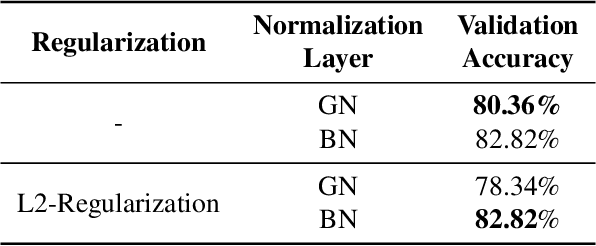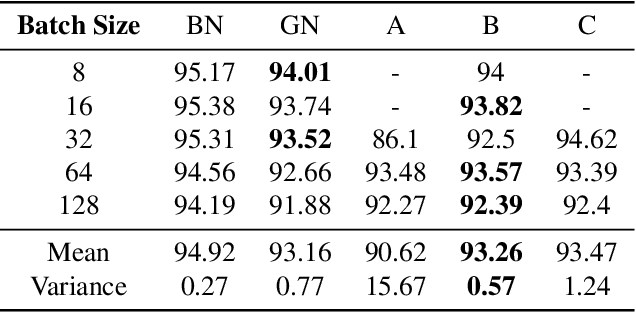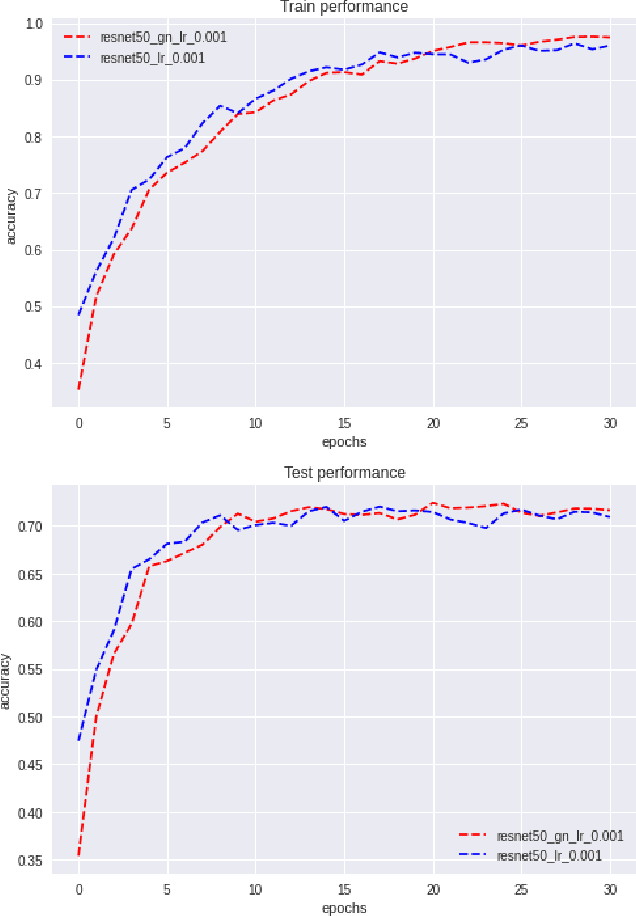Understanding and Improving Group Normalization
Paper and Code
Jul 05, 2022



Various normalization layers have been proposed to help the training of neural networks. Group Normalization (GN) is one of the effective and attractive studies that achieved significant performances in the visual recognition task. Despite the great success achieved, GN still has several issues that may negatively impact neural network training. In this paper, we introduce an analysis framework and discuss the working principles of GN in affecting the training process of the neural network. From experimental results, we conclude the real cause of GN's inferior performance against Batch normalization (BN): 1) \textbf{unstable training performance}, 2) \textbf{more sensitive} to distortion, whether it comes from external noise or perturbations introduced by the regularization. In addition, we found that GN can only help the neural network training in some specific period, unlike BN, which helps the network throughout the training. To solve these issues, we propose a new normalization layer built on top of GN, by incorporating the advantages of BN. Experimental results on the image classification task demonstrated that the proposed normalization layer outperforms the official GN to improve recognition accuracy regardless of the batch sizes and stabilize the network training.
 Add to Chrome
Add to Chrome Add to Firefox
Add to Firefox Add to Edge
Add to Edge